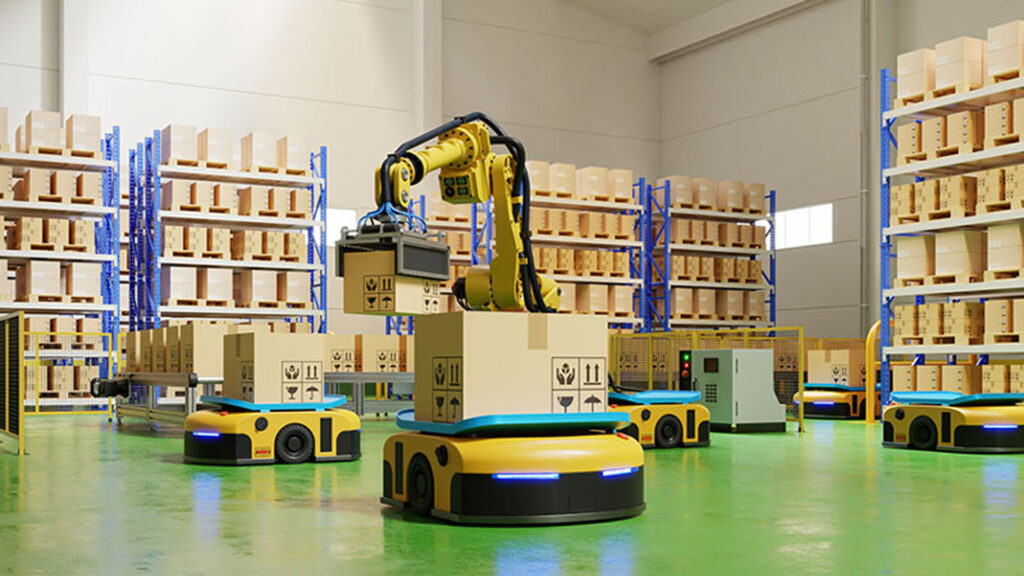
In recent years, the logistics and supply chain sector in India has witnessed a rapid technological transformation, and at the forefront of this evolution is the adoption of robotics in Indian warehouses. With increasing consumer demand, the e-commerce boom, and the need for faster and more efficient operations, the integration of robots in Indian warehousing has become not just a trend but a necessity.
Understanding the Need for Robotics in Warehousing
Traditional warehousing in India has long relied on manual labor, which often led to operational inefficiencies, increased error rates, and longer fulfillment times. However, the landscape began shifting when global and domestic companies started focusing on automation to streamline their logistics and warehouse processes.
The deployment of robots in Indian warehousing has significantly improved accuracy, reduced human error, and optimized resource utilization. From automated guided vehicles (AGVs) and robotic arms to sorting and picking robots, these machines are revolutionizing how inventory is handled, stored, and dispatched.
Key Drivers Behind the Rise of Robotics in Indian Warehouses
- E-commerce Growth
The exponential growth of e-commerce in India, driven by platforms like Amazon, Flipkart, and Reliance Retail, has resulted in a demand for faster order processing and last-mile delivery. This demand cannot be met efficiently through manual systems alone. Robotics offers scalable and cost-effective solutions to meet these logistics requirements. - Labor Shortages and Rising Wages
As wages increase and labor availability fluctuates, warehouse operators are looking to robotics to maintain productivity levels. Robots can work around the clock without breaks, ensuring higher throughput and reliability. - Advancement in AI and IoT
Technologies such as artificial intelligence, machine learning, and the Internet of Things (IoT) have enabled robots to become smarter, more adaptable, and easier to integrate into existing systems. These technologies allow real-time data tracking, predictive maintenance, and intelligent decision-making in warehouse operations. - Government Push for Automation and Digital India
The Indian government’s initiatives toward digitization and the promotion of smart infrastructure have further propelled investment in automation. Industrial corridors and logistics parks now often include provisions for high-tech warehousing facilities.
Also Read: Unlock Ideal Warehouse Spaces in Lucknow with Express Roadways
Benefits of Robotics in Indian Warehousing
- Increased Efficiency and Speed
Robots can drastically reduce the time taken for picking, packing, and sorting items. This ensures faster order fulfillment and enhances customer satisfaction. - Improved Accuracy
With precision-guided systems and AI algorithms, robots can minimize errors in inventory management, leading to better stock control and fewer returns. - Cost-Effectiveness
Although the initial investment in robotic systems is high, the long-term cost savings from reduced labor expenses and improved efficiency make it a worthwhile investment. - Enhanced Safety
Robotics reduce the need for human workers to perform dangerous or repetitive tasks, thereby lowering workplace injuries and enhancing overall safety standards.
Applications of Robots in Indian Warehouses
- Automated Picking and Sorting
Robots equipped with computer vision and AI algorithms can identify and sort items based on size, weight, and destination. - Inventory Management
Drones and robotic systems can conduct regular inventory checks, monitor stock levels, and update warehouse management systems in real time. - Palletizing and Depalletizing
Robotic arms can stack or unstack items from pallets with precision and speed, ensuring smooth inbound and outbound logistics. - Packing and Labeling
Automation systems can now handle packing and labeling operations, reducing human dependency and increasing accuracy.
Major Players and Innovations in India
Several Indian startups and companies are contributing to this robotic revolution. GreyOrange, Addverb Technologies, and Asimov Robotics are some notable names providing cutting-edge warehouse automation solutions. These companies are collaborating with large logistics providers and e-commerce platforms to modernize storage and distribution facilities across the country.
Future Outlook
The future of robotics in Indian warehouses looks promising. As technology becomes more affordable and accessible, even small and mid-sized logistics players are expected to adopt automation to stay competitive. Integration with cloud computing, big data analytics, and blockchain will further enhance the capabilities of robotic systems in warehousing.
Additionally, the emergence of smart cities and the increasing demand for 24-hour delivery services will further push the demand for technologically advanced logistics hubs. Cities like Mumbai, Bengaluru, and Delhi NCR are already seeing high-tech warehousing developments, and the trend is spreading to other regions as well.
If you’re planning to invest in a modern warehouse in Kolkata or any other metropolitan hub, it’s crucial to consider automation and robotic solutions as part of your long-term infrastructure strategy. Advanced facilities that incorporate robotics not only improve operational capabilities but also attract top-tier clients looking for reliable fulfillment partners.
Moreover, for businesses seeking a competitive edge, selecting the right warehouse in India with robotic capabilities can greatly impact delivery speed, customer satisfaction, and bottom-line profitability.
Conclusion
The rise of robots in Indian warehousing is more than just a technological upgrade—it’s a complete transformation of the supply chain ecosystem. With faster processing, reduced errors, and greater efficiency, robotics is reshaping the future of logistics in India. As adoption continues to grow, businesses that embrace this change today will be better positioned to lead in the high-speed, high-demand economy of tomorrow.